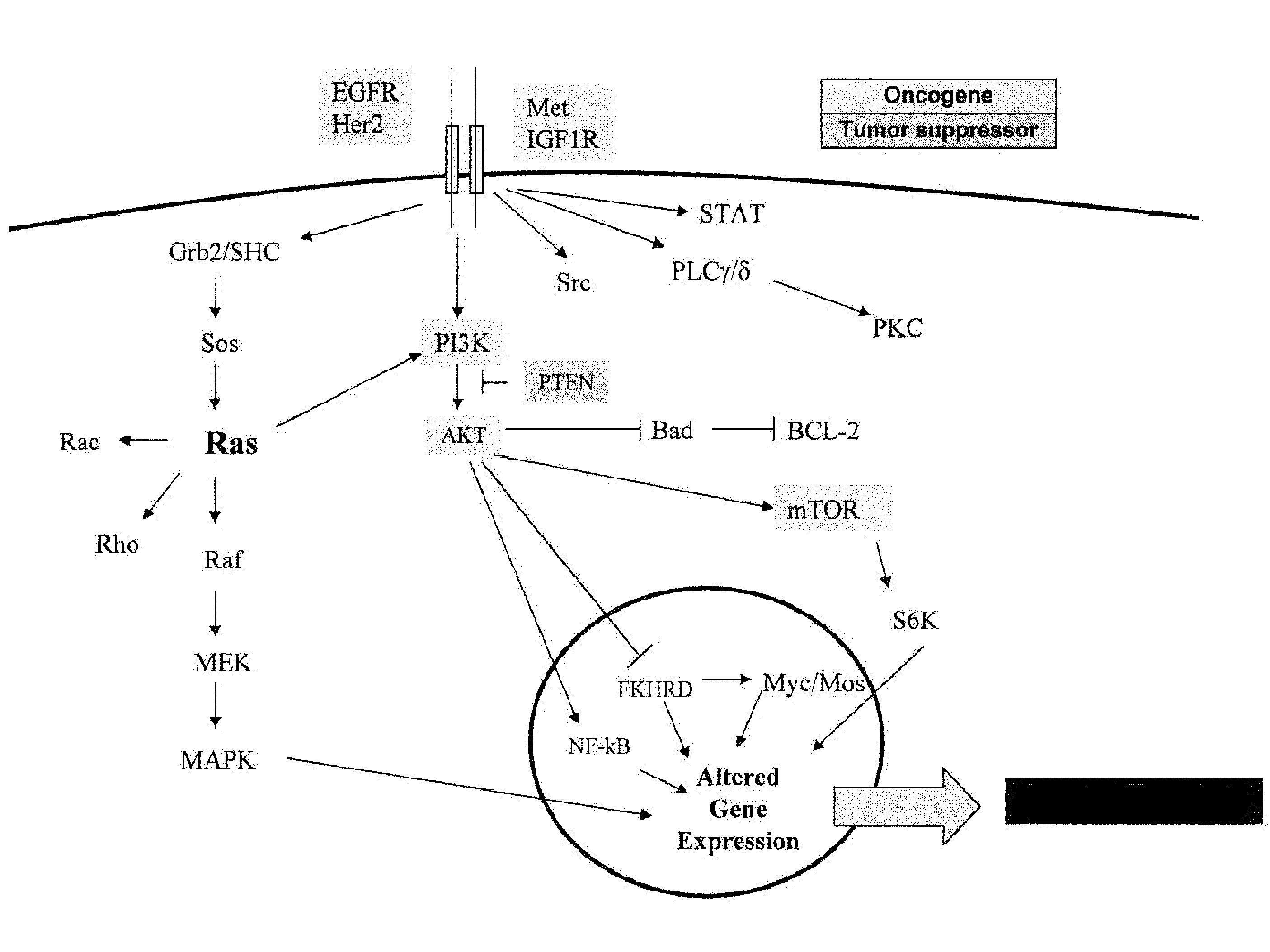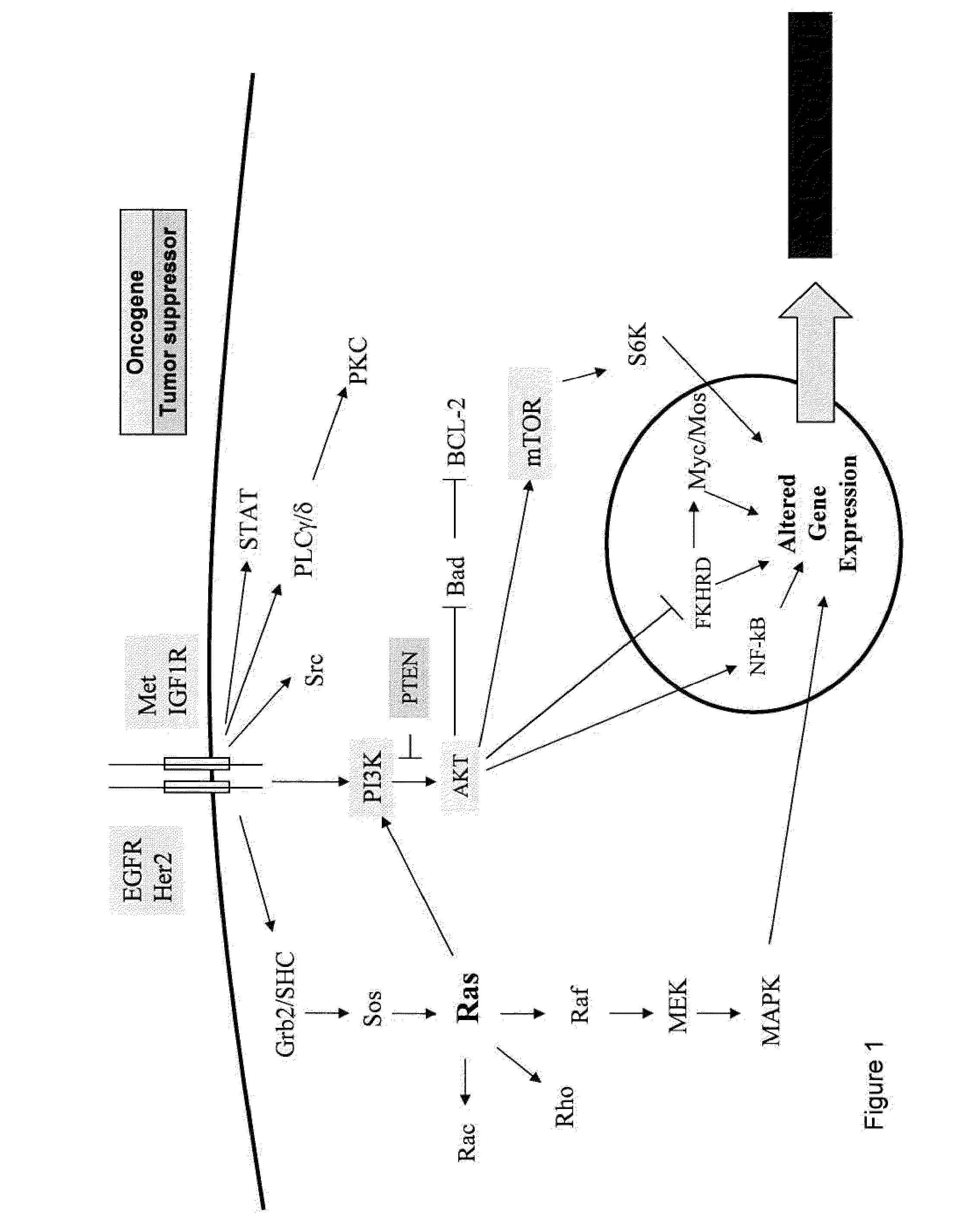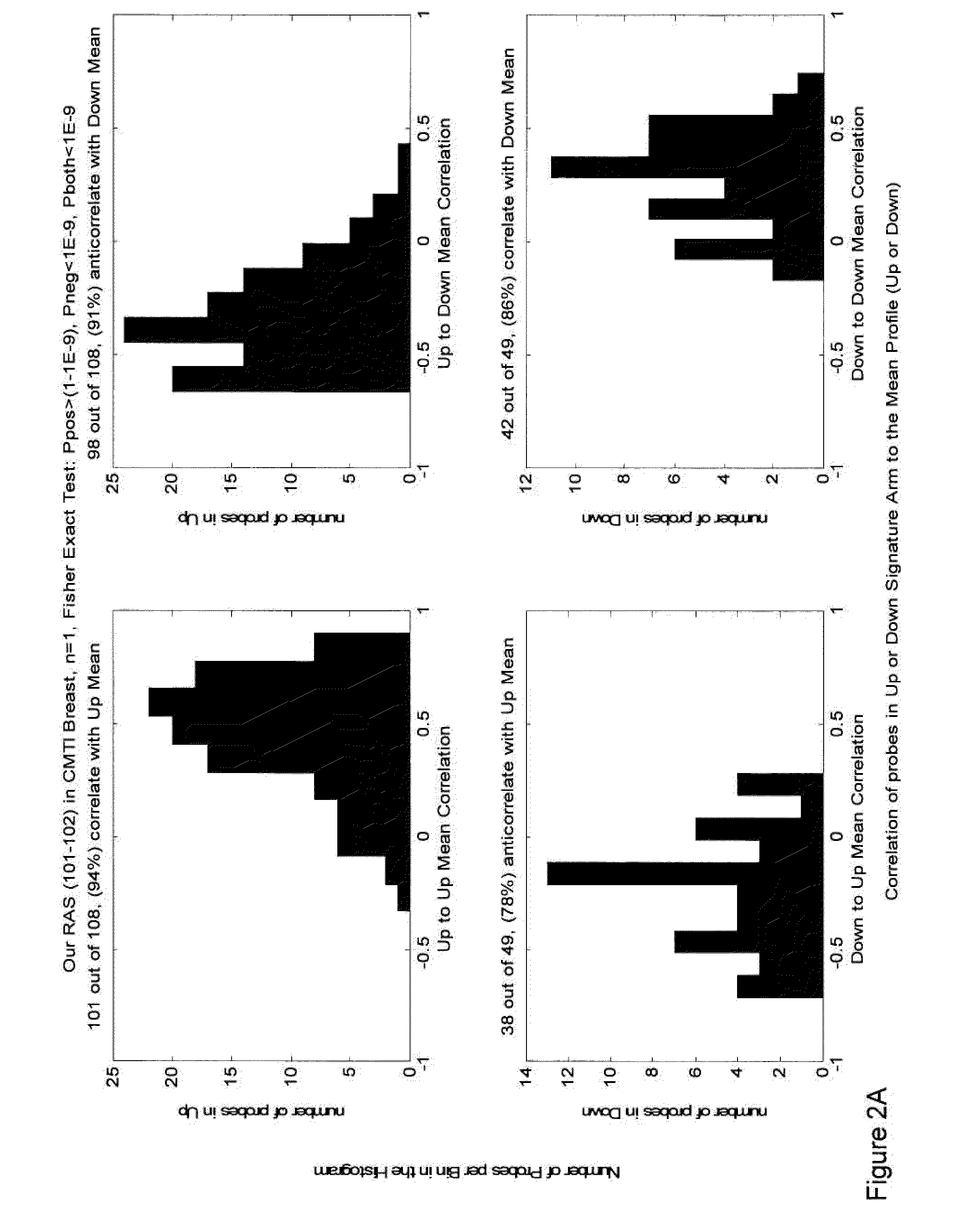Methods and gene expression signature for assessing ras pathway activity
a gene expression and pathway activity technology, applied in the field of methods and gene expression signatures for assessing ras pathway activity, can solve the problems of unvalidated literature examples, impede the identification of practical and robust gene expression predictors of response, and press the need for accurate response prediction
- Summary
- Abstract
- Description
- Claims
- Application Information
AI Technical Summary
Benefits of technology
Problems solved by technology
Method used
Image
Examples
example 1
Identification of Gene-Expression Based RAS Pathway Activity Biomarkers
[0264]Genome wide gene expression profiling provides a new paradigm for detecting and understanding oncogene deregulation by measuring coherent changes in multiple genes downstream from oncogene signaling. A recent study by Bild et al. (2006, Nature 439:353-357) set the stage for developing oncogene signatures for activation of the RAS, Myc, E2F3, Src, and beta-catenin pathways. These signatures were derived from primary human mammary epithelial cells stably transfected with each of these five oncogenes. The linear combination of genes in the signatures was shown to be predictive of sensitivity to therapeutic agents targeting specific pathways. Although this study provided an important proof of concept for developing oncogene signatures, it left open for interpretation the exact methods for using the genes in the signatures for measuring oncogene deregulation in tumor samples. Specifically, the expectation from t...
example 2
Coherency of RAS Pathway Signature in Cell Line Panels
[0268]As a first step in the analysis of the RAS signatures, we assessed the coherency of the signatures across four cell line panels from lung, colon, breast, and lymphoid malignancies. The purpose of coherence analysis is to show the statistical significance of the difference between the “Up” and “Down” arms of the signature in a new dataset. Two correlation coefficients were calculated for all of the genes in both the Up and Down arms. First, the correlation between each gene in the Up arm and the average of all genes in the Up arm is calculated. Second, the anticorrelation between each gene in the Up arm and the average of all genes in the Down arm is calculated. This is repeated for genes in the Down arm. If the signature is coherent, most of the genes from the Up arm should correlate with the average of all Up genes and anticorrelate with the average of all genes in the Down arm. A Fisher exact test is calculated for correl...
example 3
Consensus of Different Signatures in Cell Lines
[0273]In this analysis we wished to assess if the different RAS pathway signatures significantly correlate and thus make similar predictions about RAS pathway deregulation in the four cell line panels. FIGS. 4A-D show the pair-wise scatter plots for our RAS signature, the Nevins UP signature, the Blum signature, and the Jack original and refined signatures. In breast cell lines (FIG. 4A), we see significant pairwise correlations between our signature and Nevins, Blum and Jack's refined signatures but not with the original Jacks signature. The negative sign of correlation between our RAS and Blum's RAS signatures is due to sign selection for Blum's results. We assigned the genes that are upregulated by RAS inhibitors into the “Down” arm and those that are downregulated by RAS inhibitors into the “Up” arm. One possible explanation for this observation is that the acute inhibition of RAS leads to changes in expression that are mimicking up...
PUM
| Property | Measurement | Unit |
|---|---|---|
| threshold | aaaaa | aaaaa |
| size | aaaaa | aaaaa |
| resistance | aaaaa | aaaaa |
Abstract
Description
Claims
Application Information
 Login to View More
Login to View More - R&D
- Intellectual Property
- Life Sciences
- Materials
- Tech Scout
- Unparalleled Data Quality
- Higher Quality Content
- 60% Fewer Hallucinations
Browse by: Latest US Patents, China's latest patents, Technical Efficacy Thesaurus, Application Domain, Technology Topic, Popular Technical Reports.
© 2025 PatSnap. All rights reserved.Legal|Privacy policy|Modern Slavery Act Transparency Statement|Sitemap|About US| Contact US: help@patsnap.com



